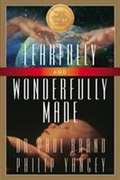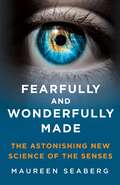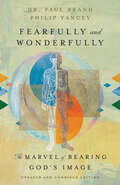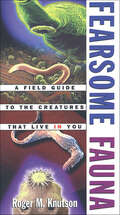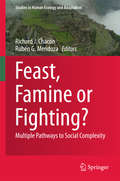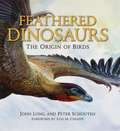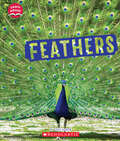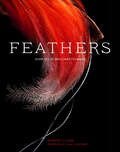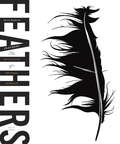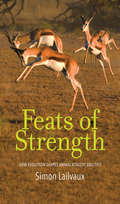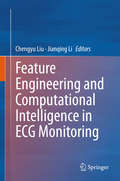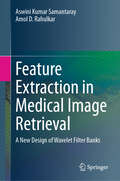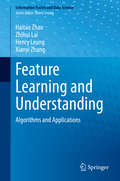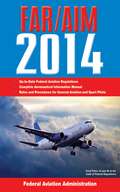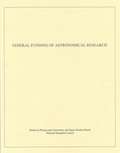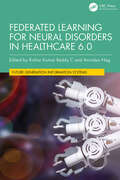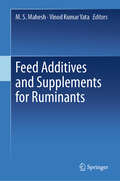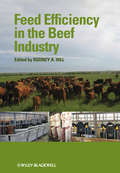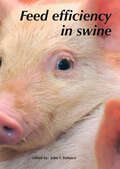- Table View
- List View
Fearfully and Wonderfully Made
by Philip Yancey Paul BrandMysterious, intricate, pulsing with energy. . . The human body is an endlessly fascinating repository of secrets. The miracle of the skin, the strength and structure of the bones, the dynamic balance of the muscles . . .
Fearfully and Wonderfully Made: The Astonishing New Science of the Senses
by Maureen SeabergThe Next Big Idea Club, August 2023 Must-Read BookIn 2016, scientists proved that humans could see light at the level of a single photon. We are living in historic times when humans may look at the very fabric of the universe in a laboratory setting. Around the world, other recent discoveries about the senses are just as astounding. It turns out we can hear amplitudes smaller than an atom, smell a trillion scents, have a set of taste buds that can discern molecules of fresh water, and can feel through the sense of touch the difference of a single molecule. Fearfully and Wonderfully Made takes readers through their own bodies, delving into the molecular and even the quantum, and tells the story of our magnificent sensorium and what it means for the next wave of human potential. From the laboratories to the ordinary homes where these breakthroughs are taking place, the book explores our current sensory Renaissance and shows readers how they, themselves, can heighten their own senses and experience the miraculous.
Fearfully and Wonderfully: The Marvel of Bearing God's Image
by Philip Yancey Dr Paul BrandDiscover this updated and combined edition of two bestselling books! The human body holds endlessly fascinating secrets. The resilience of skin, the strength and structure of the bones, the dynamic balance of the muscles—your physical being is knit according to a pattern of stunning purpose. Now Gold Medallion winners Fearfully and Wonderfully Made and In His Image have been completely revised and updated to offer a new audience timeless reflections on the body. Join renowned leprosy surgeon Dr. Paul Brand and bestselling writer Philip Yancey on a remarkable journey through inner space—a spellbinding account of medical intervention, pain and healing, and the courage of humanity. Discover here the eternal truths revealed by our seemingly ordinary existence. The human body is a window into the very structure of God's creation and a testament to God's glory.
Fearless Flyer: Ruth Law and Her Flying Machine
by Heather LangA National Science Teachers Association Best STEM BookDiscover a thrilling moment in history when pioneering aviator Ruth Law attempted to do what no other aviator had done before: fly nonstop from Chicago to New York. On November 19, 1916, at 8:25 a.m., Ruth Law took off on a flight from Chicago to New York City that aviation experts thought was doomed. Sitting at the controls of her small bi-plane, exposed to the elements, Law battled fierce winds and numbing cold. When her engine ran out of fuel, she glided for two miles and landed at Hornell, New York. Even though she fell short of her goal, she had broken the existing cross-country distance record. And with her plane refueled, she got back in the air and headed for New York City where crowds waited to greet her. This story is perfect to share during Women's History Month or anytime during the year!
Fearon's Biology
by Lucy BledsoeFurther study of biology can prepare you for an interesting career. Perhaps you would like to work in a hospital, a zoo, or a research laboratory. Perhaps you are interested in farming or fishing or teaching. These are just a few of the job opportunities in this fascinating field of science.
Fearsome Fauna: A Field Guide to the Creatures That Live in You
by Roger M. KnutsonHypochondriacs beware-- would you believe the nastiest creatures in the known universe live inside our bodies? Not content to just find a home and produce offspring in our internal space, parasites will drink our blood, eat our cells, and infest our muscles. There is very little that can be said in their favor, with perhaps one exception-- they are truly fascinating!Fearsome Fauna is a wickedly amusing and startlingly informative look into the secret world of these fascinating creatures. Perhaps the greatest biological success story of all time (there are more kinds of parasites than insects), parasites have found homes in the vast majority of people on earth and have learned to live in their environment without destroying it (usually). For readers who would like to meet these hardworking beasts-- or learn how to avoid them-- Fearsome Fauna tells you everything you always wanted to know about parasites but were too disgusted or terrified to ask.
Feast, Famine or Fighting?: Multiple Pathways to Social Complexity (Studies in Human Ecology and Adaptation #8)
by Richard J. Chacon Rubén G. MendozaThe advent of social complexity has been a longstanding debate among social scientists. Existing theories and approaches involving the origins of social complexity include environmental circumscription, population growth, technology transfers, prestige-based and interpersonal-group competition, organized conflict, perennial wartime leadership, wealth finance, opportunistic leadership, climatological change, transport and trade monopolies, resource circumscription, surplus and redistribution, ideological imperialism, and the consideration of individual agency.However, recent approaches such as the inclusion of bioarchaeological perspectives, prospection methods, systematically-investigated archaeological sites along with emerging technologies are necessarily transforming our understanding of socio-cultural evolutionary processes. In short, many pre-existing ways of explaining the origins and development of social complexity are being reassessed. Ultimately, the contributors to this edited volume challenge the status quo regarding how and why social complexity arose by providing revolutionary new understandings of social inequality and socio-political evolution.
Feathered Dinosaurs: The Origin of Birds
by John A. Long Peter SchoutenScientists have recovered more than a billion fossils, but no discovery has been more breath-taking than the fossils recently found in northern China, findings which prove that several families of dinosaurs had feathers, or feathery hair-like coverings, adorning their bodies. Now in the beautifully designed Feathered Dinosaurs, paleontologist John Long and illustrator Peter Schouten provide a stunning visual record of these extraordinary prehistoric creatures, illuminating the evolutionary march from primitive, feathered dinosaurs through to the first true flying birds. Schouten, an acclaimed natural history artist, has created 80 full-color paintings that capture the striking physical traits of these feathered dinosaurs. Drawing on his extensive knowledge of the lifestyles of modern birds and mammals, plus the extant scientific data regarding how these dinosaurs might have looked and behaved, Schouten has produced not only the most beautiful but also the most accurate visual representations of these animals in print. Equally important, John Long, a noted paleontologist and widely published science author (with some 24 books to his credit), provides an engaging companion text that places these feathered dinosaurs within the larger family of dinosaurs--for instance, outlining their relationship to T. Rex and Velociraptor, species well known to Jurassic Park fans--and discusses the factual information that can be deduced from their fossil remains, in effect providing an insightful natural history of this remarkable group. A true marriage of art and science, Feathered Dinosaurs presents an unprecedented visual record of one of the most significant breakthroughs in the history of vertebrate paleontology--the discovery that many predatory dinosaurs were cloaked with feathers, perhaps just as colorful and fanciful as those of their living relatives.
Feathers (Learn About)
by Eric GeronLet's learn all about the different types of animal coverings!Which animals have feathers? Birds! Do you know why birds need feathers to survive? With amazing photos and lively text, this book explains how feathers help birds eat, fly, swim, stay warm, blend in, and more! Get ready to learn all about feathers.ABOUT THE SERIES:Animals have different body coverings for different reasons. Some animals use their coverings to keep warm or stay cool, others use them for protection, and can either stand out or blend in. Some animals even use their coverings to move! This vibrant new set of Learn About books gives readers a close-up look at five different animal coverings, from fur and feathers to skin, scales, and shells. Each book is packed with photographs and fun facts that explore how each covering suits the habitat, diet, survival, and life cycle of various animals in the natural world.
Feathers, Flippers, and Fur
by Dorothy Hinshaw PatentThe book is factually enriched with photographs of various animals, their habitats, along with distinguishing characteristics and behaviours.
Feathers: Displays of Brilliant Plumage
by Robert ClarkThe award-winning National Geographic photographer captures the stunning variety and mystery of bird feathers in this acclaimed monograph.Robert Clark’s fascinating and brilliantly colorful images reveal the beauty and myriad functions of a seemingly simple thing: the bird feather. Each exquisitely detailed close-up is paired with informative text about the utility and evolution of the feather it depicts, making this handsome marriage of art and science the ideal gift for bird lovers, natural history buffs, and photography enthusiasts.“Art meets science in a poetic celebration of Earth’s astonishing diversity. Feathers is an intensely beautiful visual taxonomy and a photographic love letter to this poetic feat of evolution.” —Brain Pickings
Feathers: Not Just for Flying
by Melissa StewartYoung naturalists explore sixteen birds in this elegant introduction to the many, remarkable uses of feathers. A concise main text highlights how feathers are not just for flying. More curious readers are invited to dig deeper with informative sidebars that underscore how feathers of all shapes and sizes help birds with warming or cooling, protect them from the sun, help them swim, glide or even dig. With a range of common and exotic species readers will be engaged by both the new and the familiar. Beautiful and delicate watercolor illustrations showcase life-size feathers and compare them to everyday objects. With a scrapbook design, Feathers is part science journal, part read-along nonfiction, making it a wonderful resource for nature studies and a delight for the youngest bird lovers.
Feathers: The Evolution of a Natural Miracle
by Thor HansonFeathers are an evolutionary marvel: aerodynamic, insulating, beguiling. They date back more than 100 million years. Yet their story has never been fully told. In Feathers, biologist Thor Hanson details a sweeping natural history, as feathers have been used to fly, protect, attract, and adorn through time and place. Applying the research of paleontologists, ornithologists, biologists, engineers, and even art historians, Hanson asks: What are feathers? How did they evolve? What do they mean to us? Engineers call feathers the most efficient insulating material ever discovered, and they are at the root of biology's most enduring debate. They silence the flight of owls and keep penguins dry below the ice. They have decorated queens, jesters, and priests. And they have inked documents from the Constitution to the novels of Jane Austen. Feathers is a captivating and beautiful exploration of this most enchanting object.
Feats of Strength: How Evolution Shapes Animal Athletic Abilities
by Simon LailvauxA fascinating exploration of the extreme world of animal athletics, how these stunning abilities have evolved, and their insights into human performance and evolution How is it that fish can climb waterfalls, snakes glide, and cheetahs run so fast? Natural and sexual selection has driven the evolution of diverse and amazing athletic abilities throughout the animal kingdom. Integrative biologist Simon Lailvaux draws on decades of performance research to highlight the ecological and evolutionary importance of these abilities, which include running, jumping, flying, biting, climbing, and swimming, and explains the many reasons they exist. He describes the methods and tools scientists use to measure animal performance—remote sensing technologies that can capture a cheetah’s running speed, or force meters that gauge the strength of a lizard’s bite or crab’s grip—as well as the diverse mechanisms underlying and enabling spectacular animal athletic feats. Using examples from the smallest insects to birds, whales, and even dinosaurs, Lailvaux provides a unique glimpse into a vibrant, eclectic field of research and points to new directions for understanding performance evolution in both animals and humans.
Feature Engineering and Computational Intelligence in ECG Monitoring
by Chengyu Liu Jianqing LiThis book discusses feature engineering and computational intelligence solutions for ECG monitoring, with a particular focus on how these methods can be efficiently used to address the emerging challenges of dynamic, continuous & long-term individual ECG monitoring and real-time feedback. By doing so, it provides a “snapshot” of the current research at the interface between physiological signal analysis and machine learning. It also helps clarify a number of dilemmas and encourages further investigations in this field, to explore rational applications of feature engineering and computational intelligence in ECG monitoring. The book is intended for researchers and graduate students in the field of biomedical engineering, ECG signal processing, and intelligent healthcare.
Feature Extraction in Medical Image Retrieval: A New Design of Wavelet Filter Banks
by Amol D. Rahulkar Aswini Kumar SamantarayMedical imaging is fundamental to modern healthcare, and its widespread use has resulted in creation of image databases. These repositories contain images from a diverse range of modalities, multidimensional as well as co-aligned multimodality images. These image collections offer opportunity for evidence-based diagnosis, teaching, and research. Advances in medical image analysis over last two decades shows there are now many algorithms and ideas available that allow to address medical image analysis tasks in commercial solutions with sufficient performance in terms of accuracy, reliability and speed. Content-based image retrieval (CBIR) is an image search technique that complements the conventional text-based retrieval of images by using visual features, such as color, texture, and shape, as search criteria. This book emphasizes the design of wavelet filter-banks as efficient and effective feature descriptors for medical image retrieval.Firstly, a generalized novel design of a family of multiplier-free orthogonal wavelet filter-banks is presented. In this, the dyadic filter coefficients are obtained based on double-shifting orthogonality property with allowable deviation from original filter coefficients. Next, a low complex symmetric Daub-4 orthogonal wavelet filter-bank is presented. This is achieved by slightly altering the perfect reconstruction condition to make designed filter-bank symmetric and to obtain dyadic filter coefficients. In third contribution, the first dyadic Gabor wavelet filter-bank is presented based on slight alteration in orientation parameter without disturbing remaining Gabor wavelet parameters. In addition, a novel feature descriptor based on the design of adaptive Gabor wavelet filter-bank is presented. The use of Maximum likelihood estimation is suggested to measure the similarity between the feature vectors of heterogeneous medical images. The performance of the suggested methods is evaluated on three different publicly available databases namely NEMA, OASIS and EXACT09. The performance in terms of average retrieval precision, average retrieval recall and computational time are compared with well-known existing methods.
Feature Learning and Understanding: Algorithms and Applications (Information Fusion and Data Science)
by Henry Leung Haitao Zhao Zhihui Lai Xianyi ZhangThis book covers the essential concepts and strategies within traditional and cutting-edge feature learning methods thru both theoretical analysis and case studies. Good features give good models and it is usually not classifiers but features that determine the effectiveness of a model. In this book, readers can find not only traditional feature learning methods, such as principal component analysis, linear discriminant analysis, and geometrical-structure-based methods, but also advanced feature learning methods, such as sparse learning, low-rank decomposition, tensor-based feature extraction, and deep-learning-based feature learning. Each feature learning method has its own dedicated chapter that explains how it is theoretically derived and shows how it is implemented for real-world applications. Detailed illustrated figures are included for better understanding. This book can be used by students, researchers, and engineers looking for a reference guide for popular methods of feature learning and machine intelligence.
Fed-Batch Cultures
by Henry C. Lim Hwa Sung ShinMany, if not most, industrially important fermentation and bioreactor operations are carried out in fed-batch mode, producing a wide variety of products. In spite of this, there is no single book that deals with fed-batch operations. This is the first book that presents all the necessary background material regarding the 'what, why and how' of optimal and sub-optimal fed-batch operations. Numerous examples are provided to illustrate the application of optimal fed-batch cultures. This unique book, by world experts with decades of research and industrial experience, is a must for researchers and industrial practitioners of fed-batch processes (modeling, control and optimization) in biotechnology, fermentation, food, pharmaceuticals and waste treatment industries.
Federal Aviation Regulations/Aeronautical Information Manual 2014: Federal Aviation Regulations/aeronautical Information Manual (Far/aim: Federal Aviation Regulations And The Aeronautical Information Manual Ser.)
by Federal Aviation AdministrationIf you’re an aviator or aviation enthusiast, you cannot be caught with an out-of-date edition of the FAR/AIM. In today’s environment, there is no excuse for ignorance of the rules of the US airspace system. In the newest edition of the FAR/AIM, all regulations, procedures, and illustrations are brought up to date to reflect current FAA data. This handy reference book is an indispensable resource for members of the aviation community, as well as for aspiring pilots looking to get a solid background in the rules, requirements, and procedures of flight training. Not only does this manual present all the current FAA regulations, it also includes: A study guide for specific pilot training certifications and ratings A pilot/controller glossary Standard instrument procedures Parachute operations Airworthiness standards for products and parts The NASA Aviation Safety reporting form Important FAA contact informationThis is the most complete guide to the rules of aviation available anywhere. Don’t take off without the FAR/AIM!
Federal Funding Of Astronomical Research
by Committee on Astronomy AstrophysicsThe National Academies Press (NAP)--publisher for the National Academies--publishes more than 200 books a year offering the most authoritative views, definitive information, and groundbreaking recommendations on a wide range of topics in science, engineering, and health. Our books are unique in that they are authored by the nation's leading experts in every scientific field.
Federated Learning for Neural Disorders in Healthcare 6.0 (Future Generation Information Systems)
by Anindya Nag Reddy C, Kishor KumarThis reference text offers a relevant and thorough examination of the overlap between neuroscience and federated learning. It explores the complexities of utilizing federated learning algorithms for MRI data analysis, demonstrating how to improve the accuracy and efficiency of diagnostic procedures. The book covers topics such as the prediction and diagnosis of Alzheimer’s disease using neural networks and ensuring data privacy and security in federated learning for neural disorders.This book: Provides a thorough examination of the transformative impact of federated learning on the diagnosis, treatment, and understanding of brain disorders Focuses on combining federated learning with magnetic resonance imaging (MRI) data, which is a fundamental aspect of contemporary neuroimaging research Examines the use of federated learning as a promising approach for collaborative data analysis in healthcare, with a focus on maintaining privacy and security Explores the cutting-edge field of healthcare innovation by examining the interface of neuroscience and machine learning, with a specific focus on the breakthrough technique of federated learning Offers a comprehensive understanding of how federated learning may transform patient care, covering both theoretical ideas and practical examples It is primarily written for graduate students and academic researchers in electrical engineering, electronics, and communication engineering, computer science and engineering, and biomedical engineering.
Feed Additives and Supplements for Ruminants
by Vinod Kumar Yata M. S. MaheshThis book comprehensively reviews various feed additives and supplements that are employed for ruminant production and health. It discusses important strategies of using additives and supplements through rumen fermentation, immunomodulation, nutrient utilization, and cellular metabolism that lead to enhanced milk production, body weight gain, feed efficiency, and reproduction. The book also presents the importance of nutritional supplements such as B-vitamins, advances in mineral nutrition, role of lesser-known trace elements, protected amino acids, slow-release nitrogen and rumen buffers on performance and health of ruminants. In addition, the book explores strategies for improving environmental stewardship of ruminant production by minimizing carbon footprint associated with greenhouse gas emissions, enhancing ruminant-derived food safety through mycotoxin binders, exogenous enzymes, probiotics, flavours, biochar, ionophores, seaweeds and natural phytogenic feed additives with an emphasis on plant secondary metabolites (tannins, saponins and essential oils, etc.). It also details information on silage additives, additives and supplements employed in successful calf rearing, transition cow management as well as to ameliorate the adversity of heat stress in ruminants. Overall, the book is valuable for veterinary and animal science researchers, animal producers, nutrition specialists, veterinarians, and livestock advisors.
Feed Efficiency in the Beef Industry
by Rodney A. HillFeed Efficiency in the Beef Industry provides a thorough and concise overview of feed efficiency in beef cattle. It frames the great importance of feed efficiency to the industry and details the latest findings of the many scientific disciplines that intersect and aim to improve efficient and sustainable production of nutritious beef. The vast majority of production costs are directly tied to feed. With increased demand for grains to feed a rapidly increasing world population and to supply a new demand for alternative fuels, feed costs continue to increase. In recent years, the negative environmental impacts of inefficient feeding have also been realized; as such feed efficiency is an important factor in both economic viability and environmental sustainability of cattle production.Feed Efficiency in the Beef Industry covers a broad range of topics ranging from economic evaluation of feed efficiency to the physiological and genetic bases of efficient conversion of feed to high quality beef. Chapters also look at how a fuller understanding of feed efficiency is leading to new selective breeding efforts to develop more efficient cattle.With wide-ranging coverage from leading international researchers, Feed Efficiency will be a valuable resource for producers who wish to understand the complexities, challenges, and opportunities to reduce their cost of production, for students studying the topic and for researchers and professionals working in the beef industry.
Feed efficiency in swine
by John F. Patience'Feed efficiency in swine' has been prepared as a comprehensive treatise on the current state of our understanding of this topic which is so important to the pork industry. Each chapter is written by international authorities who understand both the science and application of their topic area. The book provides detailed insight into the many factors affecting feed efficiency, ranging from diet processing to herd health, from nutrition to physiology and from day-to-day barn management to the adoption of advanced technologies. The authors explain such practical aspects as the challenge of interpreting feed efficiency information obtained on farm or the role of liquid feeding. The authors also delve into more scientific topics such as amino acid or energy metabolism or animal physiology. This book is written for people who have a technical interest in pork production, including nutritionists, geneticists, farm management specialists, veterinarians, other academics and, of course, pork producers.
